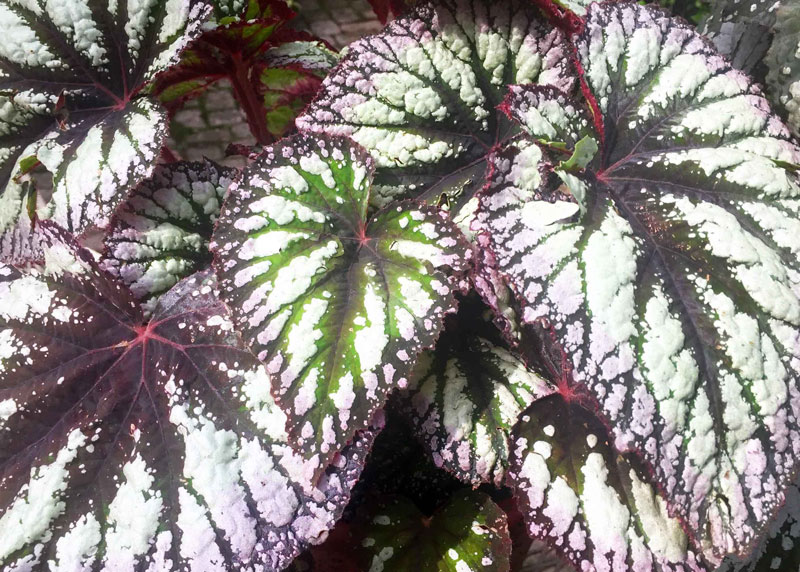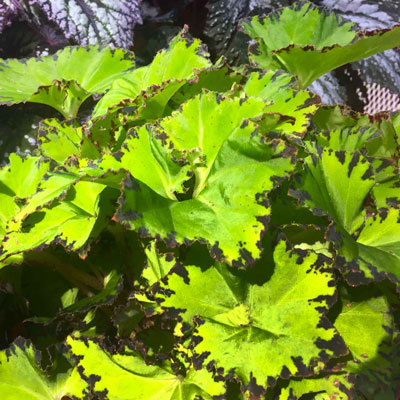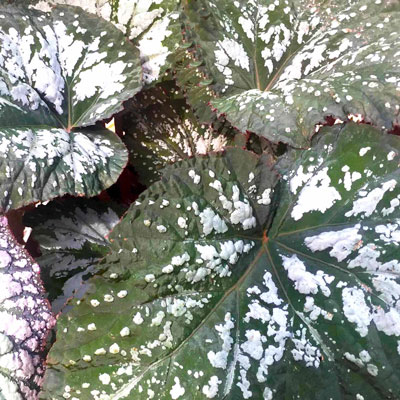Smitten with the fancy-leafed begonias

I’ve always had a greenhouse. My dad and I built a small lean-to greenhouse off our garage when I was 12. I had access to the university greenhouses at Ohio State and Colorado State while in school. When Lynn and I were newlyweds, I bought a small greenhouse.
But when we moved to the country, I went for it all. I bought a used greenhouse (30 x 60 ft.), and I still grow in it today. That’s where I had my first big collection of Rex begonias – some 200 types growing in 2- and 3-gallon pots. Gradually I thinned them down to my favorite 20 or so, and then my interests shifted over to haworthias and aloes. But I always managed to have 10 or 12 fancy-leafed begonias around me, even up to this day.
These plants do beautifully in shade out on the patio. I prefer terra cotta pots because they have more heft and ballast.

I use a potting mix that’s 60 percent sphagnum peat, 10 percent pine bark mulch, 20 percent perlite and 10 percent expanded shale (more ballast).
I keep my plants moist at all times. Wilted begonias soon develop browned edges to their leaves. Many fancy-leafed types are sensitive to heat anyway, and drought just adds to that sensitivity.
Apply a diluted solution of high-nitrogen, water-soluble fertilizer each time that you water your begonias. Every fourth or fifth time, let the water flow out the drain holes to leach out accumulations of mineral salts.

Most of the clump-forming fancy-leafed begonias are propagated from leaf cuttings. Select vigorous leaves, then use very sharp scissors to trim away two-thirds of the leaf surface to reduce the amount of water lost to transpiration. You can put 6 or 8 leaves into a 6-inch pot filled with two-thirds sphagnum peat moss and one-third horticultural perlite. Water the pot of cuttings thoroughly, then cover it with dry cleaner’s plastic to retain humidity. Place it in bright light but with no direct sunlight. The leaf stems (petioles) will begin to form roots and new shoots within a few weeks at which time you can lift them and pot them individually.

To revisit a friend…
When you decide you want a flowering begonia, this year look for a Dragon Wing. Available in both red and pink selections, they look like strongly vigorous wax begonias. Their leaves are 2 to 3 inches long on plants 15 to 20 inches tall. The flowers are proportionately larger as well. They make spectacular large potted plants for the patio or hanging baskets. I’ve grown them for years in sun until mid-morning, then shade the balance of the day. They’re nothing short of fabulous.
